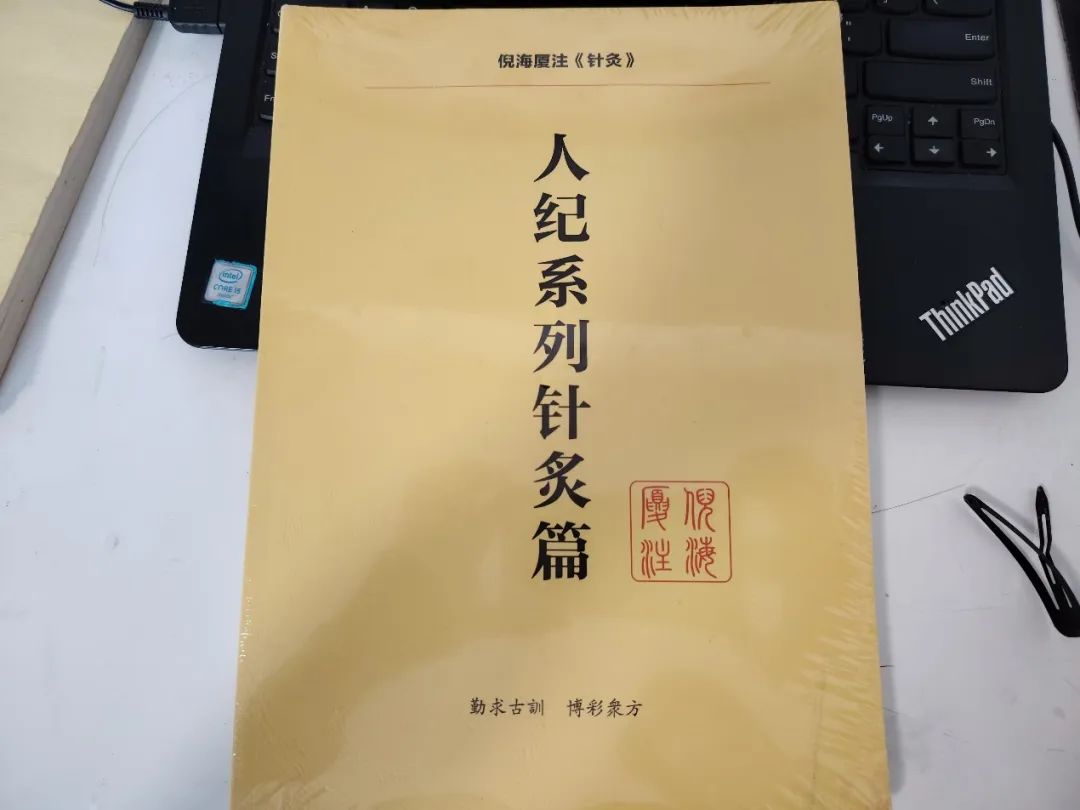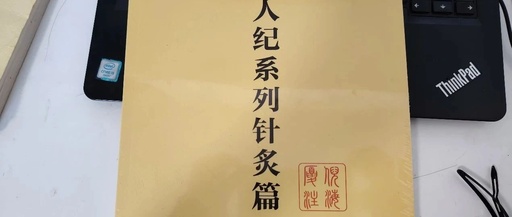
In Traditional Chinese Medicine (TCM), the term “meridian” (经络) encompasses both the main meridians and their collaterals.
The main meridians are somewhat familiar to everyone, such as the well-known Gallbladder Meridian (胆经), Liver Meridian (肝经), and Lung Meridian (肺经).
When visiting a TCM clinic, one often encounters diagrams of meridians, which indicate the corresponding acupuncture points.
However, these diagrams only represent the main meridians of the human body. So, what about the collaterals?
The “Su Wen” (素问) states that the straight pathways are the meridians, while the branches are referred to as collaterals.
The main meridians run straight forward, but this alone is insufficient; otherwise, the body would become disordered. The collaterals connect the main meridians to each other.
Each main meridian has at least one collateral point, present in both Yin and Yang meridians.
For example, the collateral point of the Hand Taiyin Lung Meridian (手太阴肺经) is the Lieque Point (列缺穴).
There are collateral points between the main meridians, connecting the Hand Taiyin Lung Meridian to the Hand Yangming Large Intestine Meridian (手阳明大肠经). Because these two meridians are connected by collaterals, they exhibit a relationship of exterior and interior. The Lung and Large Intestine are interrelated.
The collateral point of the Hand Yangming Large Intestine Meridian is the Pianli Point (偏历穴).
Since the Large Intestine is a Yang organ and the Lung is a Yin organ, the connection through the collateral points maintains the balance of Yin and Yang in a healthy individual.
If a person is not healthy, measures must be taken to restore this balance. It is precisely because of the connection of collateral points between the meridians that Yin and Yang can be harmonized.
Yin and Yang complement each other. If one observes a patient whose Yin is moving with Yin and Yang with Yang, that person is nearing death. Clinically, this is rarely encountered, but it can occur after chemotherapy, as if a barrier has been placed over the illness, preventing the medication from reaching it.
In addition to the collateral points of the Hand Taiyin Lung Meridian (列缺穴) and the Hand Yangming Large Intestine Meridian (偏历穴), the other collateral points of the twelve main meridians include:
The collateral point of the Foot Yangming Stomach Meridian (足阳明胃经) is the Fenglong Point (丰隆穴);
The collateral point of the Foot Taiyin Spleen Meridian (足太阴脾经) is the Gongsun Point (公孙穴);
The collateral point of the Hand Shaoyin Heart Meridian (手少阴心经) is the Tongli Point (通里穴);
The collateral point of the Hand Taiyang Small Intestine Meridian (手太阳小肠经) is the Zhizheng Point (支正穴);
The collateral point of the Foot Taiyang Bladder Meridian (足太阳膀胱经) is the Feiyang Point (飞扬穴);
The collateral point of the Foot Shaoyin Kidney Meridian (足少阴肾经) is the Dazhong Point (大钟穴);
The collateral point of the Hand Jueyin Pericardium Meridian (手厥阴心包经) is the Neiguan Point (内关穴);
The collateral point of the Hand Shaoyang Sanjiao Meridian (手少阳三焦经) is the Waiguan Point (外关穴);
The collateral point of the Foot Shaoyang Gallbladder Meridian (足少阳胆经) is the Guangming Point (光明穴);
The collateral point of the Foot Jueyin Liver Meridian (足厥阴肝经) is the Ligou Point (蠡沟穴).
In TCM, the Kidney is considered the source of congenital essence, resembling the roots of a tree, from which all meridians originate.
The kidneys are like the roots of a tree, while the entire body represents the branches and leaves, distributed throughout.
As the trunk of the tree extends, it has twelve main branches, with many smaller branches, with fifteen being the most significant; these represent our fifteen collaterals.
Collaterals differ from meridians in that they do not have multiple acupuncture points; each collateral is represented by a single point, with one collateral corresponding to one acupuncture point.
I only realized this after studying, and I was surprised to find it was different from my previous understanding.
Each of the twelve primary meridians has one collateral, plus the Ren Meridian’s (任脉) collateral point, the Jiuwei Point (鸠尾穴), the Du Meridian’s (督脉) collateral point, the Changqiang Point (长强穴), and the collateral point of the Spleen’s major collateral, the Dabaopoint (大包穴), totaling fifteen major collaterals.
There are collaterals between the meridians, and there are also collaterals between the organs, facilitating communication between the organs; thus, collaterals are distributed throughout the body, with the main pathways being the meridians and the secondary being the collaterals.
These collaterals have a leader, which is the Dabaopoint (大包穴) of the Spleen. The collaterals of both Yin and Yang meridians are governed by the Dabaopoint, which also coordinates when communication between the organs is obstructed. Therefore, the Dabaopoint is a commonly used acupuncture point.
Since we have summarized the collateral points, let’s also summarize the Original-Collateral Treatment method.
“Original” refers to the original points of the disease meridian, while “collateral” refers to the collateral points of the exterior or interior meridians.
For example, if the left Hand Yangming Large Intestine Meridian is sore and painful, one can needle the original point, Hegu Point (合谷穴), on the opposite side—right Hand Yangming Large Intestine Meridian, and then needle the collateral point, Lieque Point (列缺穴), of the right Lung Meridian; this will alleviate the condition. This is the Original-Collateral Treatment method.
Only the Yang meridians have original points; the Yin meridians do not have original points. Therefore, the six Yang meridians have six original points:
The original point of the Hand Yangming Large Intestine Meridian is Hegu Point (合谷穴).
The original point of the Foot Yangming Stomach Meridian is Chongyang Point (冲阳穴).
The original point of the Hand Taiyang Small Intestine Meridian is Wangu Point (腕骨穴).
The original point of the Foot Taiyang Bladder Meridian is Jinggu Point (京骨穴).
The original point of the Hand Shaoyang Sanjiao Meridian is Yangchi Point (阳池穴).
The original point of the Foot Shaoyang Gallbladder Meridian is Qiuxu Point (丘墟穴).
All Yang meridians have original points; why is that?
Because the three Jiao (三焦) of the body, including the upper, middle, and lower Jiao, are interconnected.
The three Jiao are densely distributed throughout the body, and they are the pathways for Yang energy. The existence of original points is due to the three Jiao.
The original points are located at the intersections of the three Jiao and the six Yang meridians. This is why Yang meridians have original points, while Yin meridians do not.
This is the relationship with the three Jiao; the three Jiao only traverse the Yang meridians, establishing them as original points because they are the source.
Thus, the Hegu Point (合谷穴) of the Large Intestine Meridian and the Lieque Point (列缺穴) of the Lung Meridian, the Chongyang Point (冲阳穴) of the Stomach Meridian and the Gongsun Point (公孙穴) of the Spleen Meridian, the Wangu Point (腕骨穴) of the Small Intestine Meridian and the Tongli Point (通里穴) of the Heart Meridian, the Jinggu Point (京骨穴) of the Bladder Meridian and the Dazhong Point (大钟穴) of the Kidney Meridian, the Yangchi Point (阳池穴) of the Sanjiao Meridian and the Neiguan Point (内关穴) of the Pericardium Meridian, the Qiuxu Point (丘墟穴) of the Gallbladder Meridian and the Ligou Point (蠡沟穴) of the Liver Meridian—these six pairs of original points of the Yang meridians and the collateral points of the Yin meridians form the basis of the Original-Collateral Treatment method.
This concludes the summary of the fifteen collaterals and the Original-Collateral Treatment method.
This article is based on the compilation of Master Ni’s “Human Chronicle Series on Acupuncture”. If there are any discrepancies, please feel free to point them out in the comments.

